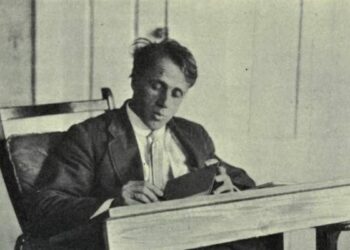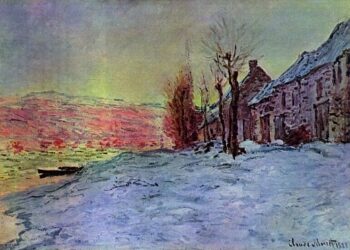The Swing Poem Summary Line by Line
What is the theme of the swing by Robert Louis Stevenson?,What is the rhyme scheme of the swing?,How does the poet feel in the swing?,Who is the poet of the poem The Swing ‘?,When was the swing poem written?,What is the formal analysis of the swing?,The wonderful poem The Swing, by Robert Louis Stevenson, transports readers to a realm of unfettered joy and whimsical childlike ideas. Stevenson encapsulates the spirit of the eternal and universal practice of swinging, which represents the carefree nature of youth, in this poetic investigation.The Swing Poem Summary Line by Line
The poet creates a beautiful picture of a child’s experience on a swing, soaring ‘up in the air and beyond the wall’ to discover fresh perspectives on the world through vivid imagery and lighthearted language. As the speaker soars to great heights on the swing, the poem transforms into a celebration of the freeing and exuberant moments of childhood play.
Also Read-
- My Shadow Poem Summary line by line
- Autumn Fires Poem Summary line by line
- What is the summary of Requiem by Robert Louis Stevenson
The Swing Poem Summary
- How do you like to go up in a swing,
- The speaker begins by asking a rhetorical question, setting the playful tone of the poem.
- Up in the air so blue?
- The speaker describes the sensation of being in the sky, emphasizing the open and carefree nature of swinging.The Swing Poem Summary Line by Line
- Oh, I do think it the pleasantest thing
- The speaker expresses a personal opinion, suggesting that swinging is the most delightful activity.
- Ever a child can do!
- The speaker asserts that swinging is an activity that any child can enjoy.
- Up in the air and over the wall,
- The imagery shifts to the physical motion of swinging, going both upward and over an imaginary wall.
- Till I can see so wide,
- The swinging motion allows the speaker to see a broad and expansive view.
- River and trees and cattle and all
- The speaker observes various elements of the landscape from the elevated perspective of the swing.
- Over the countryside—
- The swinging motion takes the speaker over the entire countryside, reinforcing the sense of freedom and adventure.
- Till I look down on the garden green,
- The swing’s movement provides a view from above, looking down on a green garden.
- Down on the roof so brown—
- The swinging continues, offering a view down to the brown roof, further emphasizing the height and motion.
- Up in the air I go flying again,
- The speaker expresses the joy of flying through the air while on the swing.
- Up in the air and down!
- The swing’s motion is both upward and downward, creating a rhythmic and exhilarating experience.
- I am so happy up there, I declare!
- The speaker expresses intense happiness while swinging, emphasizing the sheer joy of the experience.
- And he stands and trims his candle so.
- A transition occurs as the speaker introduces a character, possibly referencing a candle trimmer or someone engaged in a different activity.
- When my mother came out to call me in,
- The speaker’s mother interrupts the swinging activity, signaling the end of the joyful experience.
- And he calls, “Must you go and shake your head?”
- The character, possibly the candle trimmer, questions the necessity of the speaker’s departure.
- And he was grown up with a beard.
- The poem concludes with a humorous and fantastical image of the character growing a beard, highlighting the whimsical nature of the poem.
The Swing Poem
Conclusion:
In The Swing by Robert Louis Stevenson, the poet captures the sheer delight and exuberance of a child experiencing the simple pleasure of swinging. The poem unfolds with playful language and vivid imagery, depicting the exhilarating motion of the swing as it carries the speaker to new heights and perspectives. Through the eyes of the child, the world becomes a magical place, with the swing providing a sense of freedom and joy.The Swing Poem Summary Line by Line
The whimsical ending adds an element of humor, contrasting the child’s carefree play with the concerns of a grown-up, symbolized by the character growing a beard. Overall, Stevenson’s poem celebrates the innocence and bliss of childhood, inviting readers to join in the whimsy of the swinging adventure.What is the theme of the swing by Robert Louis Stevenson?,What is the rhyme scheme of the swing?,How does the poet feel in the swing?,Who is the poet of the poem The Swing ‘?,When was the swing poem written?,What is the formal analysis of the swing?,
FAQs:
1. Who is the author of “The Swing”?
“The Swing” is a poem written by Robert Louis Stevenson, a Scottish author known for his works such as “Treasure Island” and “Strange Case of Dr Jekyll and Mr Hyde.”
2. What is the central theme of the poem?
The central theme revolves around the joy and freedom of childhood play, particularly the delightful experience of swinging.
3. How does the poem use imagery to convey the sensation of swinging?
The poem employs vivid imagery to describe the physical motion of the swing, taking the reader on an imaginary journey through the air. Descriptions of the landscape, such as the river, trees, and countryside, contribute to the sensory experience.
4. How does the poem explore the idea of perspective?
The poem explores the idea of gaining a different perspective through the swinging motion. The child sees a wide view of the landscape from above, emphasizing the transformative power of simple activities in shaping one’s perception.
5. What emotions are expressed by the speaker in the poem?
The speaker expresses intense happiness, declaring joy and delight while swinging. The carefree and exhilarating experience of the swing is conveyed through the speaker’s enthusiastic and positive emotions.

















